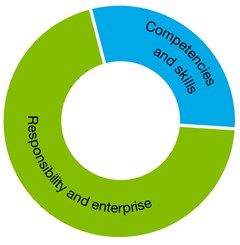Explore content
Typically, by the end of Foundation Year, students:
Identify and clarify information and ideas
identify and describe familiar information and ideas during a discussion or investigation
Organise and process information
gather similar information or depictions from given sources
Apply logic and reasoning
identify the thinking used to solve problems in given situations
Typically, by the end of Foundation Year, students:
Pose questions
pose factual and exploratory questions based on personal interests and experiences
Imagine possibilities and connect ideas
use imagination to view or create things in new ways and connect two things that seem different
Consider alternatives
suggest alternative and creative ways to approach a given situation or task
Seek solutions and put ideas into action
predict what might happen in a given situation and when putting ideas into action
Transfer knowledge into new contexts
connect information from one setting to another
Draw conclusions and design a course of action
share their thinking about possible courses of action
Evaluate procedures and outcomes
check whether they are satisfied with the outcome of tasks or actions


